This blog post features an extraordinary well-preserved copy of what is perhaps one of the earliest extant drawing manuals that were published in Western Europe in the first half of the seventeenth century. Its author is Odoardo Fialetti, an Italian artist whose professional life flourished in Venice at the end of the sixteenth century; Fialetti had access to Tintoretto’s workshop, eventually becoming an accomplished copperplate engraver. While more than 200 engravings are attributed to him, Fialetti is best known for the illustrations he created for his two drawing manuals published in Venice in 1608 and 1609. Indeed, these two manuals became extremely popular among young artists, having a considerable impact on subsequent European manuals of this type throughout the seventeenth and eighteenth centuries.
In a few words, a drawing manual consisted of a collection of images of the human body that served as models for young apprentices; these illustrations represented the body in full or in sections, and were arranged in increasing difficulty. Essentially, these manuals were self-taught guides and, since they were meant to be heavily used as opposed to be shelved for reference, currently they are rarely found at libraries, museums, or private collections.
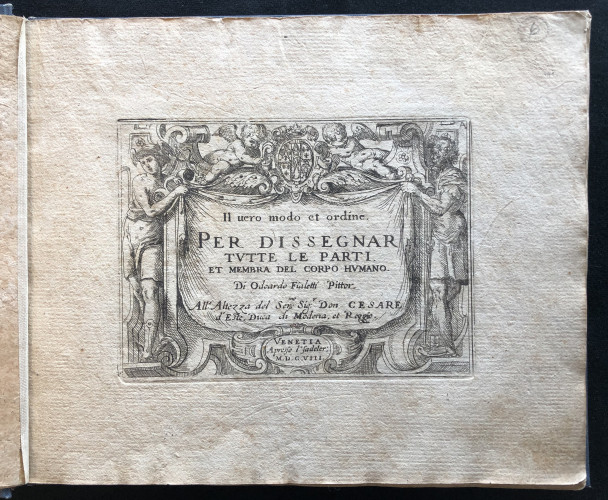
Title page. Odoardo Fialetti. Il vero modo et ordine per dissegnar tutte le parti et membra del corpo humano (The Accurate Technique and Order to Draw the Parts and Members of the Human Body)Venice: Remondini, ca. 1700s
In 1608, Odoardo Fialetti published Il vero modo et ordine per dissegnar tutte le parti et membra del corpo humano (The Accurate Technique and Order to Draw the Parts and Members of the Human Body); and the following subtitle was also added: Tutte le parti del corpo humano diviso in piu pezzi (All the Parts of the Human Body Divided in more Pieces). The manual contains 32 engravings, numbered 1-32 on the upper-right corner, with two engravings at the end, each of them depicting a workshop.
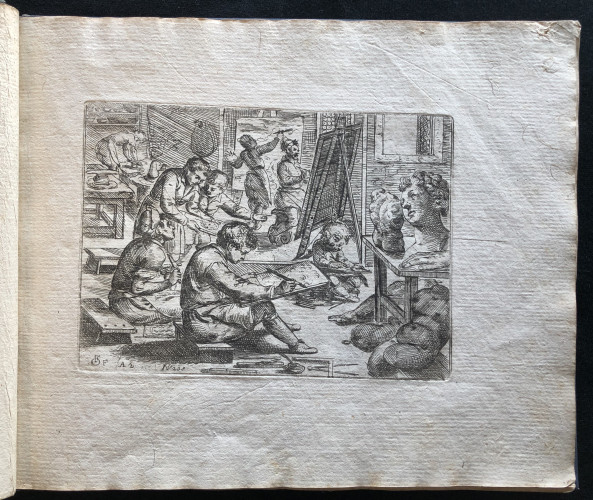
The Artist Worshop. Odoardo Fialetti. Il vero modo et ordine per dissegnar tutte le parti et membra del corpo humano (The Accurate Technique and Order to Draw the Parts and Members of the Human Body)Venice: Remondini, ca. 1700s
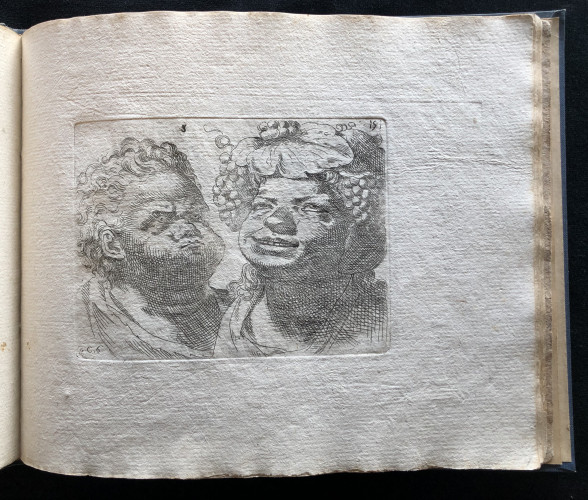
Engraving from Odoardo Fialetti. Il vero modo et ordine per dissegnar tutte le parti et membra del corpo humano (The Accurate Technique and Order to Draw the Parts and Members of the Human Body)Venice: Remondini, ca. 1700s

Engraving from Odoardo Fialetti. Il vero modo et ordine per dissegnar tutte le parti et membra del corpo humano (The Accurate Technique and Order to Draw the Parts and Members of the Human Body)Venice: Remondini, ca. 1700s
In 1609, Fialetti published a second manual entitled, Della regola, misura, o simmetria delle teste de gli huomini, donne, e fanciulli (Concerning the Rule, Measure, or Symmetry of the Heads of Men, Women, and Children). It includes a frontispiece followed by 10 engravings with their respective text. The first engraving is a richly illustrated dedicatory; the other nine are detailed illustrations that teach students how to draw ears, noses, mouths, and heads.
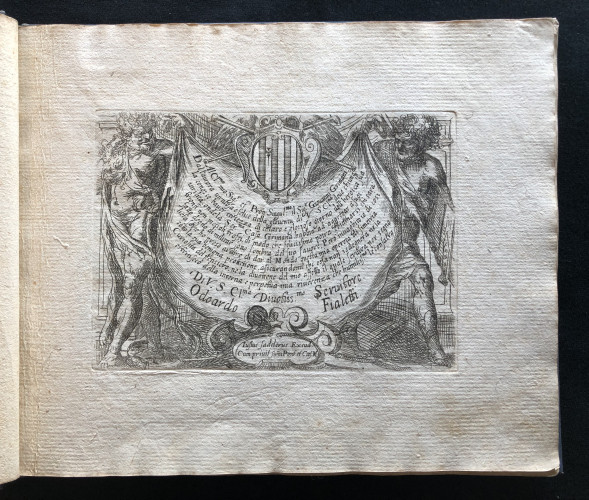
Dedication engraving. Odoardo Fialetti. Il vero modo et ordine per dissegnar tutte le parti et membra del corpo humano (The Accurate Technique and Order to Draw the Parts and Members of the Human Body) Venice: Remondini, ca. 1700s
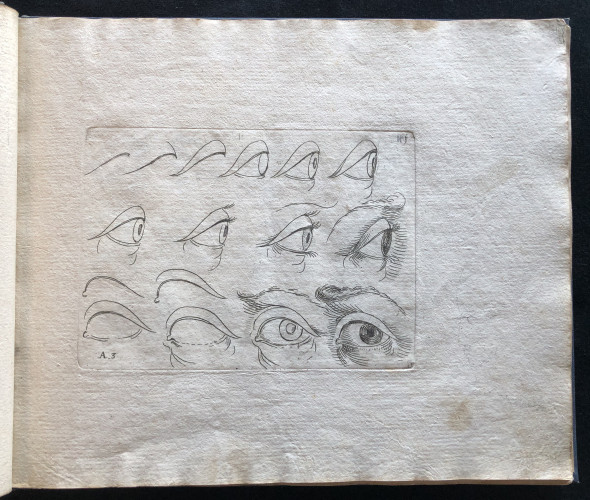
Engraving from Odardo Fialetti. Il vero modo et ordine per dissegnar tutte le parti et membra del corpo humano (The Accurate Technique and Order to Draw the Parts and Members of the Human Body) Venice: Remondini, ca. 1700s
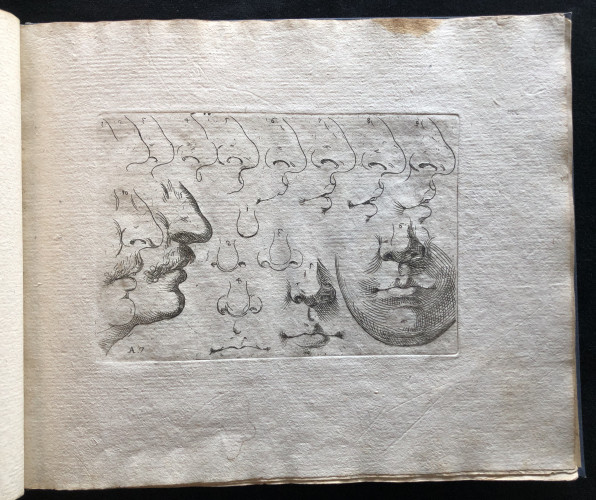
Engraving from Odardo Fialetti. Il vero modo et ordine per dissegnar tutte le parti et membra del corpo humano (The Accurate Technique and Order to Draw the Parts and Members of the Human Body) Venice: Remondini, ca. 1700s
However, the engravings of our copy were actually printed in the eighteenth century. Following the death of Justus Sadeler, the publisher of the 1608 and 1609 editions, all the plates formerly in Sadeler’s possession were sold to other publishers, including the Remondini family, who acquired the plates engraved by Fialetti. Throughout the eighteenth century, the Remondini firm reprinted Fialetti’s plates, even including them in editions of manuals authored by other artists. We certainly know that our copy is a Remondini imprint because this publisher consistently used a paper with a watermark in the shape of an “R”, as shown in the image below. 1
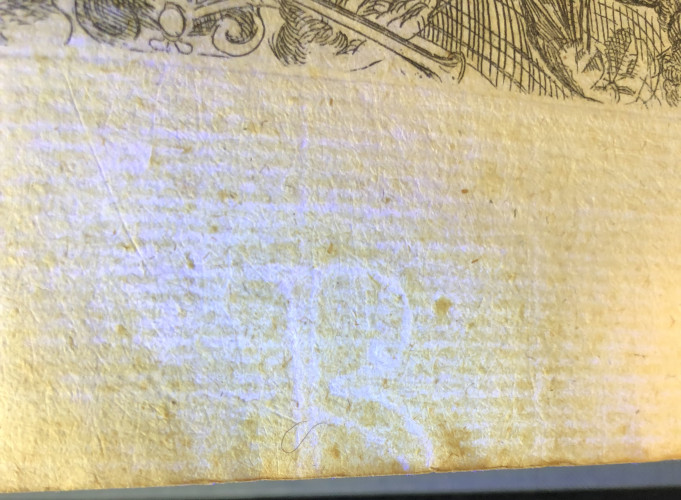
Watermark found on the upper part of the dedication engraving (upside-down image). Odoardo Fialetti. Il vero modo et ordine per dissegnar tutte le parti et membra del corpo humano (The Accurate Technique and Order to Draw the Parts and Members of the Human Body) Venice: Remondini, ca. 1700s
Moreover, the Remondini reprints introduced some modifications in the plates themselves and their arrangement. The plates are numbered by a combination of letters and numbers, A1, A2, A3, etc. Thus, the original number on the upper-right corner are often erased. There is also a plate that was damaged, possibly when it was being transported to the Remondini's printing shop.
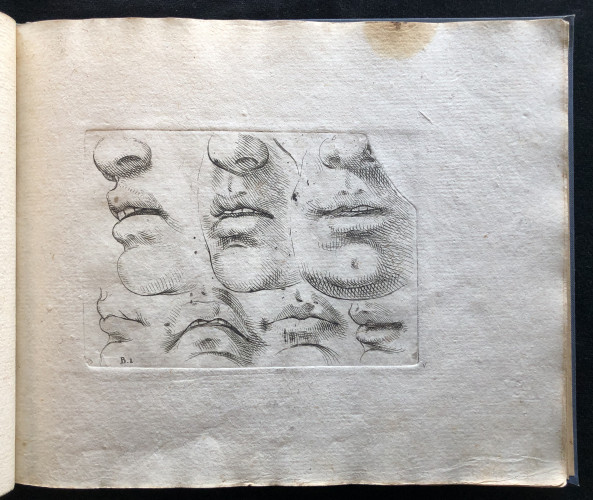
Engraving showing the damaged plate from Odoardo Fialetti. Il vero modo et ordine per dissegnar tutte le parti et membra del corpo humano (The Accurate Technique and Order to Draw the Parts and Members of the Human Body) Venice: Remondini, ca. 1700s
Regarding the number and arrangement of the engravings, our copy consists of 40 of them, all of which are derived from Fialetti’s two manuals of 1608 and 1609 respectively. To be precise, our copy opens with the title of Il vero modo (1608), followed by the dedication engraving of the Della regola (1609), the first of the two engravings depicting a workshop, and six engravings from Della regola. Next, the subtitle of the Il vero modo introduces the rest of the engravings, which are derived from the 1608 manual. Finally, the Remondini added two new engravings signed by Jacopo Palma the Younger.

One of two engravings by Jacopo Palma the Younger that were added to Fialetti's original collection of engravings, from Odoardo Fialetti. Il vero modo et ordine per dissegnar tutte le parti et membra del corpo humano (The Accurate Technique and Order to Draw the Parts and Members of the Human Body) Venice: Remondini, ca. 1700s
If you wish to learn more about this manual, including an examination of the rest of the illustrations, you can now browse a digital version of the copy held at the Getty Research Institute, which exactly replicates the content and arrangement of our own copy.
1. Philippe Sénéchal. “Justus Sadeler. Print Publisher and Art Dealer in Early Seicento Venice”. Print Quarterly 7 (1990): 34-35. Mario Infelise & Paola Marini. Remondini: un editore del Settecento. Milan: Electa, 1990: 257, 356.